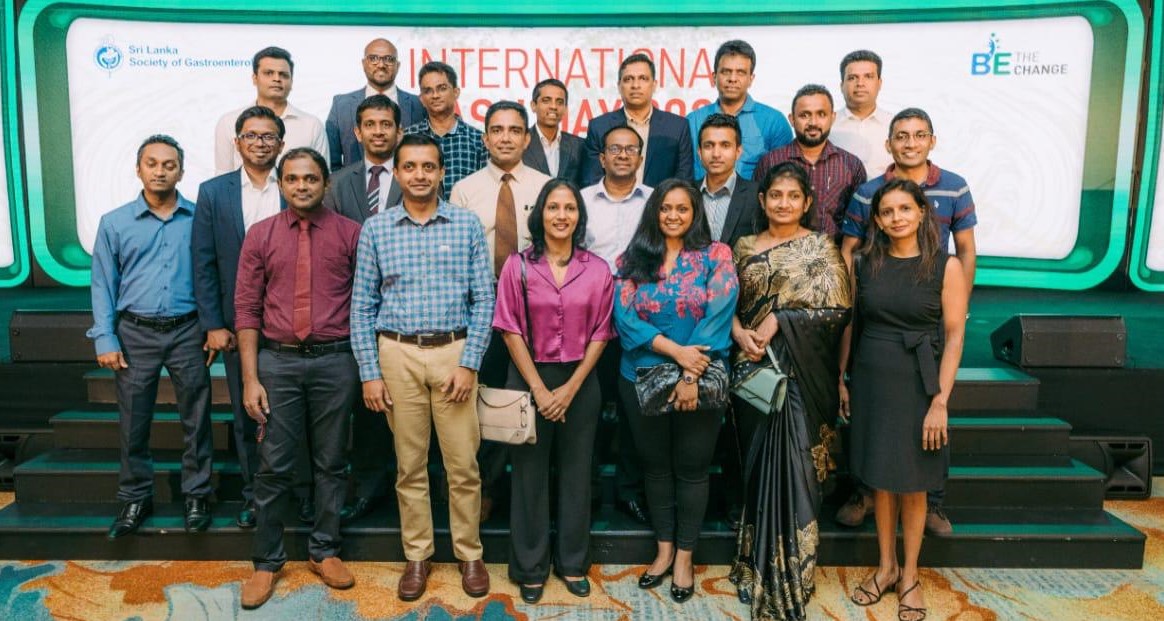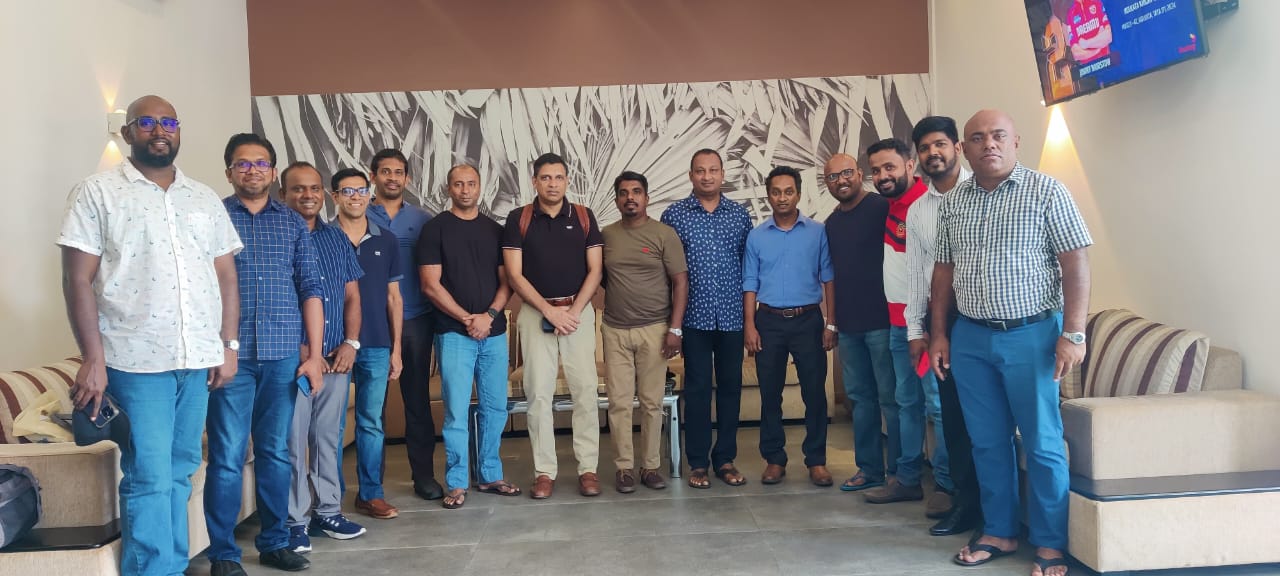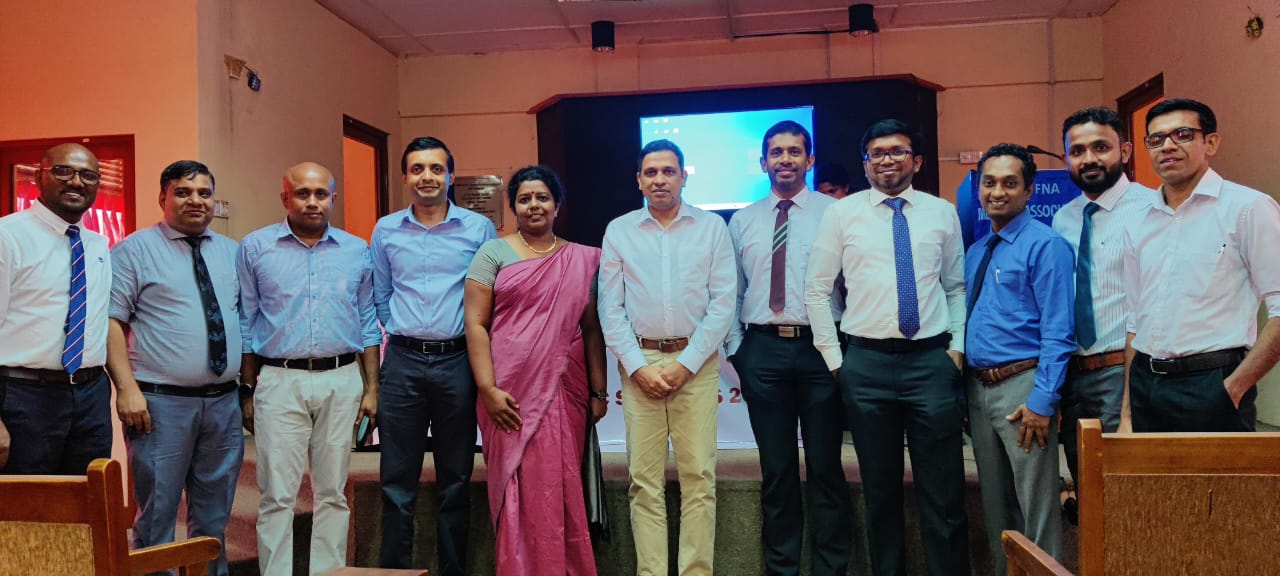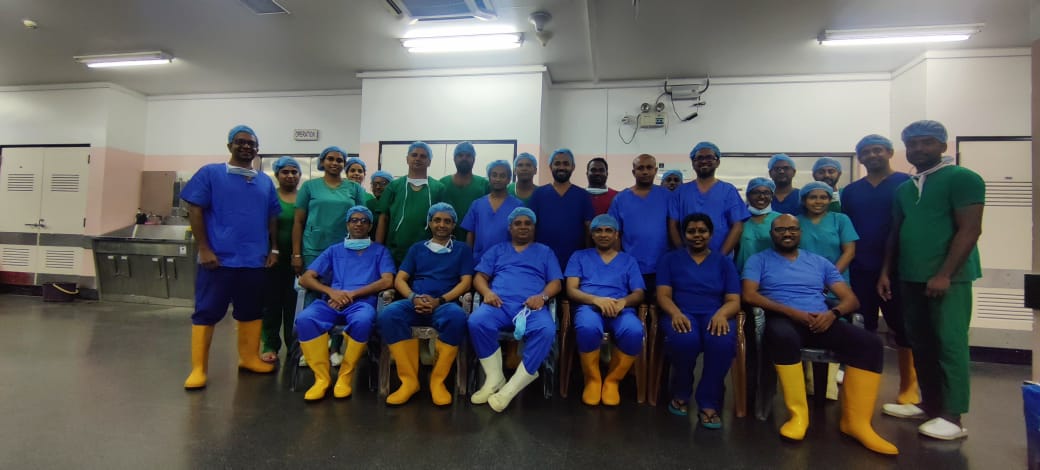About Us

About Us
SLSG
The Sri Lanka Society of Gastroenterology (SLSG) is the country’s foremost organization dedicated to the development and promotion of the fields of Gastroenterology and Hepatology. The society prides itself on being one of the few specialty organizations in the country to be composed of members representing numerous specializations, resulting in a truly multi-disciplinary approach to achieving excellence in these fields.
The emergence of Gastroenterology as a specialty in medicine in Sri Lanka can be traced as far back as to 1965. There was steady growth in the field despite many obstacles, mainly due to the efforts of several pioneering figures in medical and surgical gastroenterology.
Pioneering Excellence Since 1965
History of Sri Lanka Society of Gastroenterology
Gastroenterology is a specialty that is widely acclaimed all over the world with large societies been established in all the developed countries, (USA, UK, Germany, Japan to mention a few) and grouped together into regional bodies like Asia Pacific, European, African under one big organization – the world organization of Gastroenterology, Digestive Endoscopy and Colo Proctology – holding large congresses on a periodic basis, attended by thousands of participants.
It was about this time in 1965 that Prof. Kuwai Nakayama visited Sri Lanka from Japan and with that visit the sun began to rise and give light to Gastroenterology in this country. Prof. Nakayama was a giant in G I surgery – especially in Oesophageal surgery. He was a great craftsman and, speed was his forte and he could perform three Oesophagectomies during a morning session. At that time there were no Gastroenterologists or Gastroenterology in this country, but the late Dr D F de S Goonewardene was known as the surgeon for the stomach. Prof. Nakayama valued his visit so much, that he decided to donate a Gastroscope to Sri Lanka, but he could not give it to a single individual. So, the first Gastroenterology society was hurriedly formed to receive this donation, and Dr D F de S Goonewardene was elected the first President. The society comprised a cross section of Colombo specialists, which included even a chest physician. Prof. Nakayama donated the first flexible Gastroscope to this country, and it was used exclusively by Dr D F de S Goonewardene on selected patients. The G E Society had very few activities like an occasional lecture by a visiting examiner for the Primary FRCS exam.
It was in 1967 that Dr. Nihal Markus proceeded to England for postgraduate studies as a Commonwealth Scholar. In UK at the Royal Infirmary, Edinburgh under Prof. Strong he had a special training in Gastroenterology under the famous Professor Circu. He returned to his motherland, but was not fortunate to have the specialty recognized. Nevertheless he practiced and taught Gastroenterology wherever he worked – Trincomalee, Ratnapura, Negombo & Galle.
In 1973, Prof Dayasiri Fernando having trained in Gastrointestinal Surgery, under the guidance of giants in the field like Prof. John Goligher at University department of Surgery (Leeds) returned to Sri Lanka & started practicing GI Surgery. He left for U.K. again in 1976, after being awarded the Smith and Nephew Fellowship for training in Gastrointestinal surgery. He returned to Sri Lanka in 1977 full of enthusiasm with a vision to establish Gastroenterology as a specialty in this country.
But he was confronted with a very firm „No‟ from a very hostile bureaucracy – the same barrier Dr. Nihal Markus faced. To them it was – “ what is gastroenterology? No it‟s not important.” Those who had vision like Dr Malinga Fernando and Dr Joe Fernando, two top level administrators at the time, together with Dr Upali Amarasuriya, the then M.S. of Kalubowila Hospital helped them enormously, when Gastroenterology was struggling to be born in this country.
At that time the facilities for diagnosis and treatment were minimal. G.I. imaging was very limited. Barium meal and screening, Barium enema, Cholecystogram, I.V. Cholanigiogram (with all its complications) and per op. cholangiograms were the order of the day. There was no U.S. scanning
In 1981, again after much persuasion the first Gastroduodenoscope (end viewing) was brought to this country – a big step forward. We could now view with accuracy the lumen of the upper G.I tract, take biopsies and take photographs using the endoscope. It was only a fibro optic endoscope and did not have a separate endoscopy room to house it. So, the endoscopies were done in the corridor of the operating theatre which was a make shift arrangement.
In 1983 the Gastroenterology unit was shifted to the Colombo General Hospital. At Prof Dayasiri Fernando‟s request the PGIM created an Endoscopy unit in the University Department of Surgery, where he was appointed to be in charge. The Chairman of the Nawaloka Group of Hospitals agreed to build a small unit attached to ward 18. The Minister of Health declared this open on the 10th of May 1984. This is the first separate Endocscopy unit of the General Hospital Colombo. Another, slim endoscope was donated by well wishers from Japan and it was used on children, gingerly moving onto sclerotherapy of Oesophageal varices of both adults and children. At about the same time, in 1985, Sri Jayewardenepura hospital started Endoscopy and Dr. N S Jayasinghe and Dr Yoheswaram were sent on a Japanese government scholarship for training in ERCP and colonoscopy. They returned and Dr. Jayasinghe started ERCP for the first time in Sri Lanka.
In December 1986, Dr Gamini Buthpitiya was the first to do a colonoscopy in the country at Peradeniya, using his personal colonscope. Teaching of Gastroenterology began at this stage with the PGIM, SLMA and the College of Physicians arranging special lectures.
In 1986 Dr. Nihal Markus was called back to his creator and eternal rest. Prof Dayasiri Fernando with the blessings of his teachers and senior colleagues, and with the help of a group of keen and enthusiastic young doctors saw the birth of the new Gastroenterology and Digestive Endoscopy Society of Sri Lanka. He was elected the President and Prof. Janaka de Silva, held the post of the secretary. Dr. P.T. de Silva, Vice President of the Society, delivered the inaugural Nihal Markus oration. Within a very short period of time the Society was accepted and elected to the governing councils of both Asia Pacific Society of Gastroenterology and Asia Pacific society of digestive Endoscopy. We were also elected to the ethics committee and the minimally invasive surgery committee of the world organization of gastroenterology. Money was required to maintain our membership and as our finances were limited, Japanese Society of Gastroenterology paid our subscriptions for many years, as a friendly gesture, to a developing sister society. A few years later, the society was rewarded with the decision of the governing councils to hold a mini congress of Asia Pacific in Sri Lanka. This was done amidst turbulence in the country and the bombing of the Kolonnawa oil tanks. The Chief Guest on this occasion was the Prime Minister, late Sirimavo Bandaranaike and the guest of honor was Minister of Justice Prof G L Peiris. Another important activity that was organized was the Joint Academic Sessions with the College of Surgeons of Sri Lanka
The specialty of Gastroenterology (Surgical) was approved for training by the PGIM in 1990, thanks to the untiring efforts of Prof. Dayasiri Fernando, The year 1990 also witnessed significant advance in the field of GI surgery. With a personal gift of a stapling device, from the American Embassy the anastomosis of bowel in low anterior resection began, using this instrument. The other significant advance was when Dr K L Fernando did the first laparoscopic cholecystectomy in 1992, using his own instruments, at Ragama. This was a giant step forward for G.I. surgery. The Sri Jayawardenapura Hospital purchased a laparoscope and laparoscopic instruments and Dr Yoheswaran started performing laparoscopic cholecystectomy in 1993. The Dept. of surgery, Colombo soon followed at the GH Colombo purchasing a Laproscope with donations from friends and well-wishers. This was then followed by Laparoscopic cholecystectomy in Teaching Hospital Kandy in 1998
At present there are gastroenterology and GI surgery units in all teaching and provincial hospitals with specialists in gastroenterology and GI surgery. All advanced procedures in therapeutic endoscopy and advanced laparoscopic GI surgery is performed regularly in these training centres. In future the Medical & Surgical divisions of the Gastroenterology in this country will advanced further in to sub specialties like Hepatology, colorectal surgery, hepatobiliary Surgery & Upper GI Surgery.





